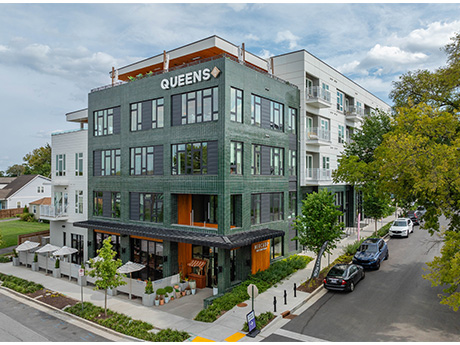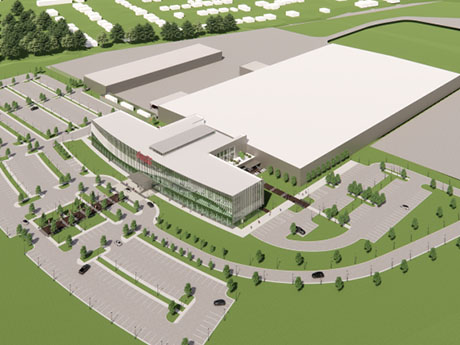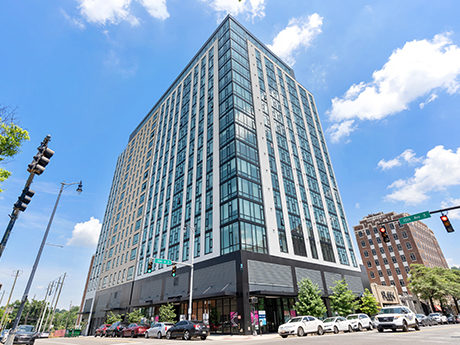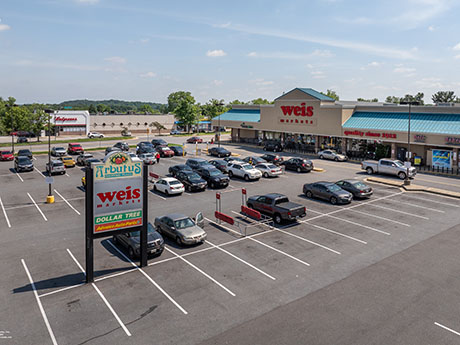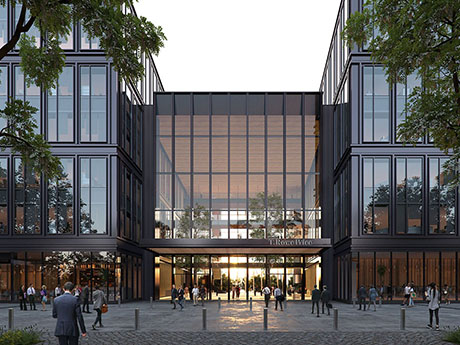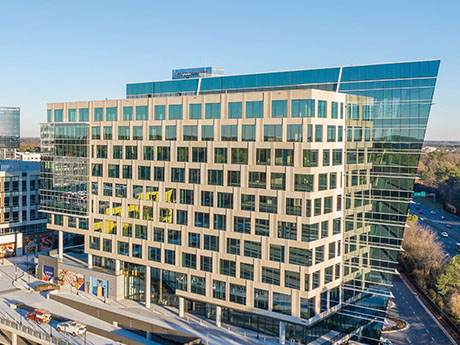Nashville’s multifamily sector has faced headwinds stemming from a wave of new deliveries over the past few years, similar to other high-growth areas across the country. Across this market, stabilized occupancy is currently 350 basis points below historical norms. Average market rents have declined nearly 3 percent from their 2022 peak, and concessions are widespread across several submarkets. However, despite these challenges, optimism is building around the Nashville’s outlook over the coming years. Investors are actively seeking well-positioned assets, anticipating what many believe will be the next strong cycle for multifamily assets in this market. Over the past three years, Nashville’s multifamily market has absorbed approximately 28,000 units, compared to roughly 30,000 new deliveries — creating a near-term supply-demand imbalance that contributed to recent softness. Nevertheless, the outlook is shifting. Only 17,000 units are expected to deliver between 2025 and 2027, while demand is expected to exceed this new supply materially, creating strong tailwinds for rent growth. In 2024 alone there were over 11,000 units of net absorption. New starts are few and far between, mostly concentrated in suburban submarkets where developers can build cost-effective, attainable housing. Elevated construction costs and higher interest rates continue to constrain development, pointing to …
Southeast Market Reports
The Nashville retail market has firmly established itself as one of the strongest and most dynamic in the United States. From luxury national chains to local entrepreneurial storefronts, retailers are increasingly drawn to the city’s diverse and resilient economy — and for good reason. Over the past decade, Nashville has been one of the fastest-growing cities in the country, with consistent year-over-year population and employment gains. This trajectory has been fueled by a favorable business climate, highlighted by the absence of a state income tax, as well as local policies that encourage corporate investment and relocation. The results are tangible: global and domestic companies alike have planted deep roots in Middle Tennessee. Major players such as AllianceBernstein, Amazon, Nissan, Bridgestone, Asurion and Deloitte have relocated or expanded here, joining long-standing Nashville-based giants like HCA Healthcare and Tractor Supply Co., both of which continue to grow their local footprint. This economic expansion has powered steady demand in the retail real estate sector. In just the past year, a wave of retailers — including Whataburger, In-N-Out Burger and 7-Eleven — have entered the Nashville market, underscoring its appeal to both national and regional brands. These additions further diversify a landscape already shaped …
Birmingham’s office market is holding its own with overall market occupancy at 82.6 percent as of fourth-quarter 2024. We saw a slower second half of the year, but that is to be expected during a presidential election year when companies often hit pause on significant real estate decisions. During the fourth quarter, Birmingham’s multi-tenant office market recorded negative absorption of 67,739 square feet, but that was a notable improvement from the negative 268,061 square feet recorded the previous quarter. Leasing activity for the quarter came in at 180,849 square feet, bringing the year-to-date total to just over 562,000 square feet — about 22 percent below the previous year’s pace. While definitely a slowdown, this performance is nothing out of step with the broader national trends. Signs of positive momentum The good news? Since the start of 2025, activity has picked up across the board. Tenants are back in the market touring space and rethinking their long-term office needs. Some are expanding, some are rightsizing to space that better fits how they work today and others are updating their office protocols to bring employees back in more regularly — all of which is driving movement in the market. In addition, several …
Birmingham’s retail market continues to demonstrate resilience despite national economic challenges. With a vacancy rate of 3.8 percent — slightly below the national average of 4.1 percent — and rental rates holding steady at $13.13 per square foot, the city remains an attractive destination for both investors and tenants. However, rising interest rates have slowed development and softened transaction volumes, reshaping the investment landscape. Macroeconomic trends The intersection of economic pressures and shifting consumer habits is redefining Birmingham’s retail landscape. Across the nation, big-box retailer bankruptcies have contributed to negative net absorption of 346,200 square feet over the past year, and Birmingham has felt similar effects. The closure of Conn’s HomePlus, among other retailers, has contributed to this contraction. Despite these challenges, suburban retail demand remains robust. Homewood, Hoover and Alabaster are experiencing continued growth, and Crestwood Festival Shopping Center has added new tenants like Fun City Adventure and Armor Gym occupying 100,000 square feet. These trends highlight the increasing popularity of experiential retail, as consumers gravitate toward destinations that offer more than just traditional shopping. Development slows New retail construction has slowed significantly, with only 130,000 square feet delivered in the past year — well below historical averages. However, …
The Birmingham industrial market is poised for an increase in absorption as the apex of higher interest rates seem to be settling down, not to mention the post-election certainty that now favors business expansion. Corporate America is waking up and the clouds are clearing. For the past 24 months, the competitive set of investor-controlled warehouse space has been sitting on about 2 million square feet of inventory. About 550,000 square feet of that is still unleased speculative space in three different projects delivered at the back-end of the post-COVID development wave that did see about 700,000 square feet of absorption of new spec space before the music metaphorically stopped. Then came the 2023/2024 wave of the “new spec space,” a byproduct of the mentioned interest rates and COVID over-correction. Several second-generation spaces are now being marketed as companies vacated or downsized for various reasons. For example, discount retailer Dollar General is vacating an entire 307,000-square-foot warehouse. Broader, there have been two major announcements in Central Alabama for the closure of distribution centers, both as a result of retailers’ bankruptcies. JoAnn Fabric’s 700,000-square-foot distribution facility in Opelika at I-85 is now on the market as is the 1.2 million-square-foot former …
Limited Construction Starts Should Help Birmingham Absorb Available Apartments in 2025
by John Nelson
Southeast Real Estate Business recently caught up with John McCrary, director of investment sales in Berkadia’s Birmingham office, to discuss trends in the local apartment market. McCrary, who specializes in investment sales in Alabama, east Tennessee and southern Mississippi, says that Birmingham’s occupancy will likely take a hit as new deliveries hit the market in the first half of the year, but there’s optimism that renters will be able to absorb those availabilities in short order. “With approximately 800 units expected to be delivered at the beginning of 2025, vacancy rates are likely to rise throughout the year,” says McCrary. “However, the slowdown in construction starts should help absorb existing units and eventually reduce the elevated vacancy rate.” The following is an edited interview: Southeast Real Estate Business: What major local or macro-economic trends are affecting the multifamily market in Birmingham? John McCrary: The interest rate environment is a key factor influencing multifamily dispositions, both in the Southeast and nationwide. Fluctuations in interest rates impact borrowing costs for developers and investors, thereby affecting the supply and demand for multifamily properties. Over the past year, Birmingham has seen strong multifamily demand, but it hasn’t kept pace with the influx of new …
Baltimore’s retail market is alive and well and has experienced something of a boom in retail activity, driven in large part by the thriving retail hubs in the city and in the surrounding suburbs. Demand for space continues to be robust and prospective tenants and investors alike are excited to be part of the Baltimore market. But the reasons why are more nuanced than simply piggybacking off the overall growth that brick-and-mortar retail is seeing across the country. Baltimore is a bargain One of the causes is the terrific value that Charm City offers when comparing prices to the major metropolises of Washington, D.C., to the south and Philadelphia to the north. The Baltimore MSA offers attractive demographics and strong retail fundamentals, making it a prime target for local, regional and national investors. A great example is the sale by KLNB’s Retail Capital Markets team of Arbutus Shopping Center in fall 2024, a 88,000-square-foot, grocery-anchored center that attracted significant demand due to its Baltimore County location, sub-$20 million price point and the broader market’s interest in grocery-anchored retail assets. Due to these robust conditions and factors, among other reasons, owners are hesitant to sell — despite the substantial interest …
Key Bridge Collapse Puts Infrastructure, Baltimore Industrial Market’s Fundamentals in Focus
by John Nelson
A major attraction within the Baltimore industrial real estate market has historically been the Port of Baltimore, as it is the most inland port on the East Coast, ranks in the top 20 nationally for tonnage and top 10 for dry bulk and attracts users and investors for its impressive capabilities. Closing on the end of first-quarter 2025, here are a few noteworthy project and market updates: March 26, 2024: The Key Bridge collapsed due to a physical collision from the container ship Dali. The bridge collapse was a tragic event with six lives lost and shipping (both in and out) being blocked for nearly three months as crews cleared the debris. $2B Key Bridge rebuild: Maryland Gov. Wes Moore unveiled the new design for rebuilding the bridge in February. The bridge is anticipated to deliver by fall 2028 and comes with enhanced capabilities, such as a 45-foot height increase and a 300-foot width increase for the shipping channel when compared with the previous design. Kiewit Infrastructure estimates the overall project will cost $2 billion. Howard Street Tunnel: As part of nearly $500 million directed toward local infrastructure projects, CSX recently kicked off the long-awaited Howard Street Tunnel project being …
The national office market continues to face headwinds in the wake of the COVID-19 pandemic, and Baltimore is no exception. Shifting tenant preferences and the city’s evolving economic landscape have created challenges, with rising vacancy rates in some submarkets. However, recent trends suggest that Baltimore’s office sector is stabilizing, with positive momentum in key areas. Changing office landscape For decades, Baltimore’s office market was defined by two primary submarkets: the traditional central business district (CBD) that is centered around Charles, Saint Paul/Light and Baltimore streets, and the Inner Harbor. The CBD was home to corporate giants such as Alex. Brown & Sons (now part of Deutsche Bank), USF&G (now part of St Paul Insurance), T. Rowe Price and Maryland National Bank (now part of Bank of America). In the 1980s, the Inner Harbor emerged as a national model for waterfront redevelopment, attracting major tenants and commanding some of the city’s highest occupancy rates. The early 2000s saw another shift with the rise of Harbor East and later Harbor Point, both of which drew high-end office tenants and further pulled demand toward the waterfront. More recently, Baltimore Peninsula has emerged as the next major office and mixed-use submarket. Historically, vacancies created …
Raleigh-Durham’s office market entered the year on a positive note as 2024 ended strong. Vacancy was largely flat in the fourth quarter, net absorption neared 300,000 square feet and move-outs were sparse. After years of uncertainty and short-term renewals dominating the landscape, companies are now committing to longer leases. Clarity around business drivers, a growing labor pool and new market entrants are all contributing factors to this decisive turn. Firms are confidently making long-term real estate decisions, bringing lease terms back to the five- to 10-year range. While the vibrancy of the pre-pandemic era has not fully returned, data shows a steady recovery throughout 2024, and 2025 is poised to bring even stronger growth. In 2024, Raleigh-Durham welcomed several notable commitments from companies establishing a foothold in the market, like Jewelers Mutual, JTL and Amgen. Leasing activity stayed strong through the fourth quarter, supporting the net absorption of nearly 160,000 square feet of office space over the course of the year. Rents have seen some downward corrections overall, but well-located, highly amenitized assets have retained rent stability. Recent recommitments from major companies like Nutanix and Hitachi highlight the area’s enduring appeal. Vacancy closed out December at 17.3 percent but was …


